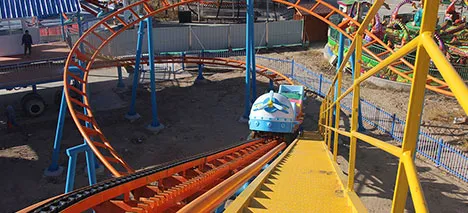- Albanian
- Arabic
- Belarusian
- Bengali
- Czech
- English
- French
- German
- Hebrew
- Hungarian
- Indonesian
- irish
- Italian
- Japanese
- kazakh
- Persian
- Russian
- Thai
- Uzbek
- Vietnamese
Cost of Equipment for Amusement Parks and Attractions Explained
Understanding Amusement Park Equipment Prices
Amusement parks are a staple of family entertainment, beloved by children and adults alike for their thrilling rides, exciting attractions, and festive atmosphere. Behind the scenes, creating and maintaining these parks involves a significant investment, particularly when it comes to amusement park equipment. This article delves into the various types of equipment found in amusement parks, the factors influencing their prices, and the implications for park operators.
Types of Amusement Park Equipment
Amusement parks boast a vast array of equipment, ranging from exhilarating roller coasters to gentle carousel rides. Here are some common types of equipment found in these parks
1. Roller Coasters These iconic rides can come in various sizes and styles, from wooden coasters with classic designs to cutting-edge steel coasters featuring inversions and loops. Prices can range dramatically, with smaller coasters costing around $1 million to $2 million, while large, complex designs can exceed $25 million.
2. Flat Rides These include attractions like Ferris wheels, bumper cars, and spin rides. Their prices vary based on size and design, typically falling between $500,000 to $5 million.
3. Water Rides Water park attractions like lazy rivers and wave pools also require significant investment. A water slide can cost anywhere from $200,000 to $3 million, while massive wave pools can exceed $10 million.
4. Themed Attractions Interactive experiences, simulators, and dark rides can be among the most expensive to install as they often involve advanced technology and intricate theming. These can range from $5 million to over $50 million depending on the complexity.
5. Support Equipment Beyond rides, parks require various support equipment such as ticketing systems, safety gear, and maintenance tools. These costs, while often lower per item, can accumulate significantly.
Factors Influencing Prices
Several factors impact the pricing of amusement park equipment
amusement park equipment prices

1. Design Complexity The more intricate the design, the higher the cost. Unique features, elaborate theming, and the latest technology in safety and ride experience contribute to higher prices.
2. Material Costs The choice of materials plays a critical role in determining prices. Durable materials resistant to weathering and wear are essential for safety and longevity but can be expensive.
3. Labor Costs Installation of amusement park rides often requires specialized labor. Skilled workers are essential for construction and safety tests, leading to increased costs.
4. Regulatory Compliance Depending on the jurisdiction, amusement parks must adhere to strict safety regulations that can add to the overall cost of equipment. Ensuring that all rides meet safety standards often involves additional engineering and testing.
5. Market Demand The popularity of amusement parks can lead to increased demand for certain types of rides, which can drive up prices. For instance, if a particular type of coaster becomes trendy, manufacturers may raise prices to reflect its popularity.
6. Seasonal and Economic Factors Fluctuations in the economy can impact equipment pricing. During economic downturns, prices may lower due to decreased demand, while during boom periods, costs could increase.
Implications for Amusement Park Operators
For operators, understanding the pricing of amusement park equipment is crucial for financial planning and strategy. High upfront costs can necessitate careful budgeting and financing strategies, including loans or partnerships. Moreover, operators must consider the return on investment attractions must not only be popular and exciting but also ensure a steady stream of customers to recoup costs.
Regular maintenance and upgrades are essential for keeping rides safe and operational, which adds to the ongoing costs for park owners. Balancing initial investment with long-term profitable operations is a tightrope that many operators navigate.
Conclusion
The amusement park industry is vibrant and dynamic, with equipment costs playing a central role in its economics. Understanding the various types of equipment and the factors that influence their prices is vital for park operators aiming to deliver thrilling experiences while maintaining financial viability. As technology and consumer preferences continue to evolve, the industry must adapt, ensuring that amusement parks remain a cherished destination for generations to come. The investment in high-quality, safe, and exciting rides will ultimately determine the success of amusement parks in an increasingly competitive landscape.
-
Modern Family Coaster Rides Safe, Thrilling Fun for All Ages!Apr.29,2025
-
Fly Coaster Rides High-Speed Thrills & Safe Adventure ExperiencesApr.29,2025
-
Guangzhou Roller Coaster Rides High-Speed Thrills & Custom DesignsApr.29,2025
-
Affordable Infinity Roller Coaster Prices Custom Backyard Rides & QuotesApr.28,2025
-
Waterslide Ferris Wheel Dual-Action Amusement Park & Waterpark AttractionApr.28,2025
-
Carousel Mansfield Rides Timeless Indoor Family Fun Near YouApr.28,2025
